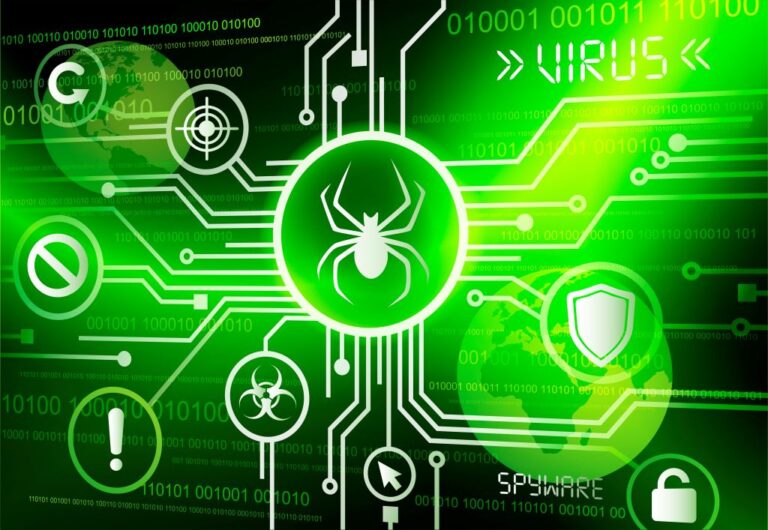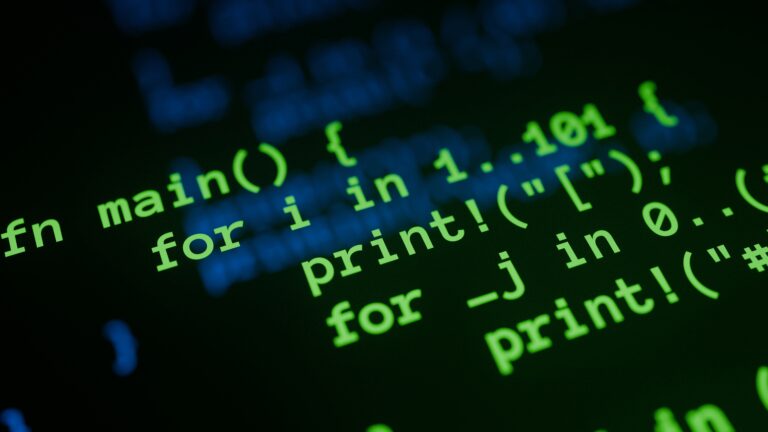Exploring Different Areas of Cybersecurity: An Introductory Guide

Cybersecurity is the field focused on protecting computers, networks, data, and systems from threats, attacks, and unauthorized access. With the rapid rise in cybercrime, cybersecurity has expanded to include various specialized areas, each playing a unique role in keeping information safe. Whether you’re curious about pursuing a career in cybersecurity or just want to understand the field better, here’s an overview of its main departments and the job roles within each.
Network Security
Network security is all about protecting the data that flows through networks, whether it’s within a single organization or across the internet. Specialists in this area set up and maintain defenses that prevent unauthorized access and ensure that data is securely transmitted between devices.
Job Roles in Network Security:
🔸Network Security Engineer: Focuses on securing the organization’s network by configuring firewalls, monitoring network traffic, and setting up security protocols.
🔸Firewall Administrator: Manages firewall settings, creates rules to allow or block specific network traffic, and regularly updates firewall configurations.
🔸Network Architect: Designs and implements secure network infrastructures that can resist attacks, handling everything from physical connections to security protocols.
🔸VPN Specialist: Configures and maintains Virtual Private Networks (VPNs) to protect remote access and ensure that data is encrypted when accessed over the internet.
Information Security (InfoSec)
Information security is focused on protecting sensitive data, ensuring it stays confidential, accurate, and available to authorized users only. It covers everything from securing personal data to enforcing rules and policies that reduce data risks.
Job Roles in Information Security:
🔸Information Security Analyst: Identifies and mitigates risks to data, monitors for breaches, and implements protective measures for sensitive information.
🔸Data Privacy Officer: Ensures that an organization complies with privacy regulations, like GDPR, to protect customer data and prevent legal issues.
🔸Compliance Officer: Works closely with legal and IT departments to ensure the organization follows rules and regulations related to data security and privacy.
🔸Risk Assessor: Evaluates data vulnerabilities and suggests ways to strengthen defenses against potential threats.
Application Security
Application security involves securing software and apps, whether they’re web-based or mobile. As apps often handle sensitive information, such as usernames, passwords, and payment data, application security ensures these programs are protected from vulnerabilities and hackers.
Job Roles in Application Security:
🔸Application Security Engineer: Works with developers to identify and fix security weaknesses in software, conducts code reviews, and performs vulnerability testing.
🔸Software Developer (Security-Focused): Builds secure applications from the ground up, embedding security practices directly into the coding process.
🔸Penetration Tester (App Focused): Simulates attacks on applications to discover potential security flaws before hackers can exploit them.
🔸Mobile Security Engineer: Specializes in securing mobile applications, focusing on preventing unauthorized access to sensitive information on smartphones and tablets.
Cloud Security
Cloud security is a growing field focused on protecting data stored and processed in cloud environments like AWS, Google Cloud, or Microsoft Azure. As more companies move their data to the cloud, it’s essential to ensure that this data is secure and that access is tightly controlled.
Job Roles in Cloud Security:
🔸Cloud Security Engineer: Implements and manages security controls specific to cloud platforms, such as encryption, identity, and access management.
🔸Cloud Architect: Designs secure cloud infrastructure and decides how data is organized, protected, and accessed.
🔸DevSecOps Engineer: Integrates security into cloud development processes, automating checks for vulnerabilities throughout the development lifecycle.
🔸Compliance Specialist (Cloud): Ensures that the company’s cloud operations meet regulatory standards and follows best security practices for cloud storage.
Threat Intelligence
Threat intelligence involves gathering and analyzing information about potential cyber threats to stay one step ahead of hackers. Professionals in this area identify patterns, trends, and possible attack sources, helping organizations understand who might target them and how.
Job Roles in Threat Intelligence:
🔸Threat Intelligence Analyst: Monitors global cyber threats, gathers intelligence on attack trends, and shares insights to help organizations strengthen their defenses.
🔸Cyber Investigator: Investigates incidents and traces the source of attacks, often working closely with law enforcement to apprehend cybercriminals.
🔸Forensic Analyst: Examines digital evidence after a security breach to determine how the attack happened, often contributing valuable insights for future prevention.
🔸Incident Responder: Acts immediately after a security incident, analyzing the threat and containing it to prevent further damage.
Incident Response
Incident response is the area dedicated to managing and mitigating security incidents, such as data breaches, malware infections, or system outages. This team steps in to control and minimize damage during an attack and then works on recovery and prevention measures.
Job Roles in Incident Response:
🔸Incident Response Specialist: Coordinates the response efforts during a security incident, ensuring it is contained, analyzed, and resolved.
🔸Security Operations Center (SOC) Analyst: Monitors systems for signs of suspicious activity and helps handle incidents when they arise.
🔸Digital Forensics Expert: Examines compromised systems, gathering evidence on how an attack was conducted and aiding in recovery.
🔸Crisis Management Coordinator: Organizes and communicates with all relevant departments during a cyber incident, managing the response effectively.
Identity and Access Management (IAM)
Identity and Access Management is focused on controlling who has access to which resources. IAM ensures that only authorized users can access certain data or systems, managing permissions, user identities, and authentication methods.
Job Roles in IAM:
🔸Identity and Access Management Specialist: Creates and enforces policies around user permissions, ensuring only the right people have access to specific data or systems.
🔸Access Control Administrator: Sets up and manages access controls, configuring user roles and maintaining secure login procedures.
🔸Authentication Developer: Designs and develops secure login solutions, like two-factor authentication or biometric systems, to make access secure and convenient.
🔸Role-Based Access Control (RBAC) Engineer: Configures and maintains role-based access systems, ensuring employees only access what they need based on their role.
Governance, Risk, and Compliance (GRC)
GRC is the area that ensures a company meets industry standards, regulations, and best practices. The GRC team works on policies, risk management, and compliance, which help companies operate securely while meeting legal and ethical guidelines.
Job Roles in GRC:
🔸GRC Analyst: Monitors and evaluates the organization’s adherence to regulations and security standards, ensuring compliance and managing risks.
🔸Policy Writer: Develops and documents policies, creating easy-to-understand guidelines for employees to follow.
🔸Risk Management Specialist: Assesses risks and helps implement strategies to reduce potential threats or vulnerabilities.
🔸Compliance Auditor: Conducts regular audits to check that all security policies and practices align with industry standards.
Security Architecture and Engineering
Security architecture is responsible for designing secure frameworks that protect an organization’s technology infrastructure. This team builds the foundation of a secure IT environment, focusing on everything from hardware to software integration.
Job Roles in Security Architecture:
🔸Security Architect: Designs the overall security strategy and technical framework for an organization, ensuring all systems are aligned with security goals.
🔸Security Engineer: Implements security measures within hardware and software systems, including firewalls, intrusion detection, and encryption tools.
🔸Network Architect: Designs secure network infrastructures that connect and protect all of the company’s systems and devices.
🔸Systems Engineer (Security): Configures and maintains secure system environments, working closely with architects and engineers to ensure systems follow security best practices.
Penetration Testing (Ethical Hacking)
Penetration testing, also known as ethical hacking, involves testing systems to find and fix security weaknesses before real hackers can exploit them. Penetration testers use the same techniques as hackers but work to strengthen security.
Job Roles in Penetration Testing:
🔸Penetration Tester (Ethical Hacker): Conducts simulated attacks on systems, applications, and networks to uncover vulnerabilities
🔸Vulnerability Assessor: Scans systems for weaknesses and provides recommendations for remediation.
🔸Red Team Specialist: Works with other “red team” members to simulate realistic attack scenarios, testing the defenses of the organization.
🔸Bug Bounty Hunter: Finds bugs and vulnerabilities in systems or applications, often as an external consultant.
Cybersecurity is a vast and exciting field with many specialized areas, each critical to protecting information, systems, and people from cyber threats. Whether you’re interested in protecting networks, investigating incidents, or building secure software, cybersecurity has a role for you. This field continues to grow, and as technology advances, so will the need for skilled professionals in each of these areas.
featured image Wesley Ford on Unsplash








